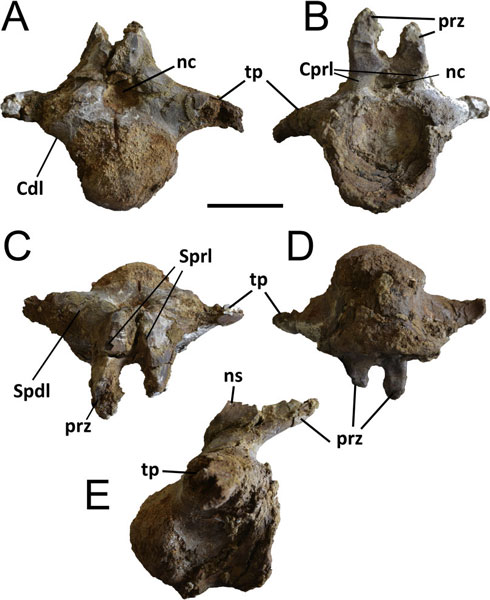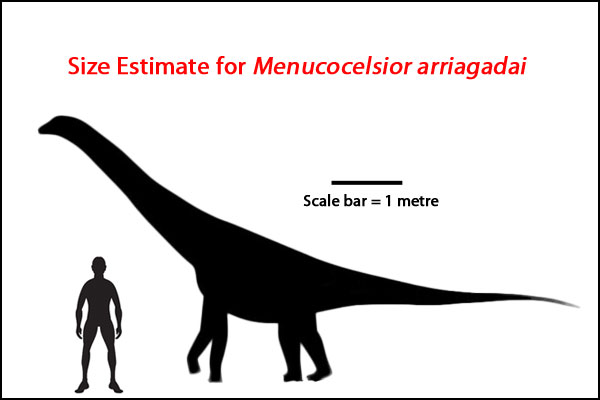Scientists writing this month in the journal “Cretaceous Research” have formally described a new genus of Late Cretaceous titanosaur from Patagonia. The dinosaur has been named Menucocelsior arriagadai based on a series of tail bones (caudal vertebrae) and fragmentary limb bones including a right humerus and a left fibula, found in sediments associated with the Allen Formation (Maastrichtian stage of the Upper Cretaceous).

Views of Menucocelsior arriagadai tail bones. Autapomorphies in the caudal vertebrae permitted the erection of a new titanosaur genus. Picture credit: Rolando et al.
A Titanosaur that “Jumped the Gun”
The announcement concerning the naming of a new titanosaur genus was made last year (2021), Menucocelsior was one of several new titanosaur genera named in 2021. However, the formal, scientific paper that erected the genus was published this month in the January edition of “Cretaceous Research”.
To read Everything Dinosaur’s article from December 2021 that outlined the new titanosaurs named and described over the previous twelve months: New Titanosaur Species Described from South America – Arrudatitan.

A scale drawing of M. arriagadai. Although only known from caudal vertebrae a size estimate has been made based on more complete and better known South American titanosaurs. It is estimated that Menucocelsior arriagadai measured around 8-10 metres in length. Picture credit: Everything Dinosaur.
Picture credit: Everything Dinosaur
A Late Cretaceous Titanosaur Paradise
Although only known from very incomplete and fragmentary material, the fossilised remains assigned to M. arriagadai do not demonstrate a close taxonomic relationship with any other, previously described titanosaur. The site where the fossils were found Salitral Ojo de Agua in Río Negro Province has also yielded the fossilised bones of at least three other species of titanosaurs and other contemporary fossil sites in the Allen Formation have provided evidence of numerous other titanosaurs along with hadrosaurs.
Researchers have concluded that the environment must have been extremely productive to support such a large number of mega herbivores. It has been proposed that the titanosaurs evolved different feeding strategies to avoid excessive competition for food resources (niche partitioning). Perhaps these animals were selective browsers, specialising in feeding from the branches of trees, whilst the hadrosaurs were bulk-feeders, targeting ground vegetation.
The genus name is derived from the indigenous Mapuche language for a large watering hole, which describes the fossil site. The specific or trivial name honours the Arriagada family, the owners of the land where the fossils were found.
The scientific paper: “The sauropod record of Salitral Ojo del Agua: An Upper Cretaceous (Allen Formation) fossiliferous locality from northern Patagonia, Argentina” by Mauro Aranciaga Rolando, Jordi A. García Marsà, Federico L. Agnolín, Matías J. Motta, Sebastián Rozadilla, and Fernando E. Novas published in Cretaceous Research.






Leave A Comment